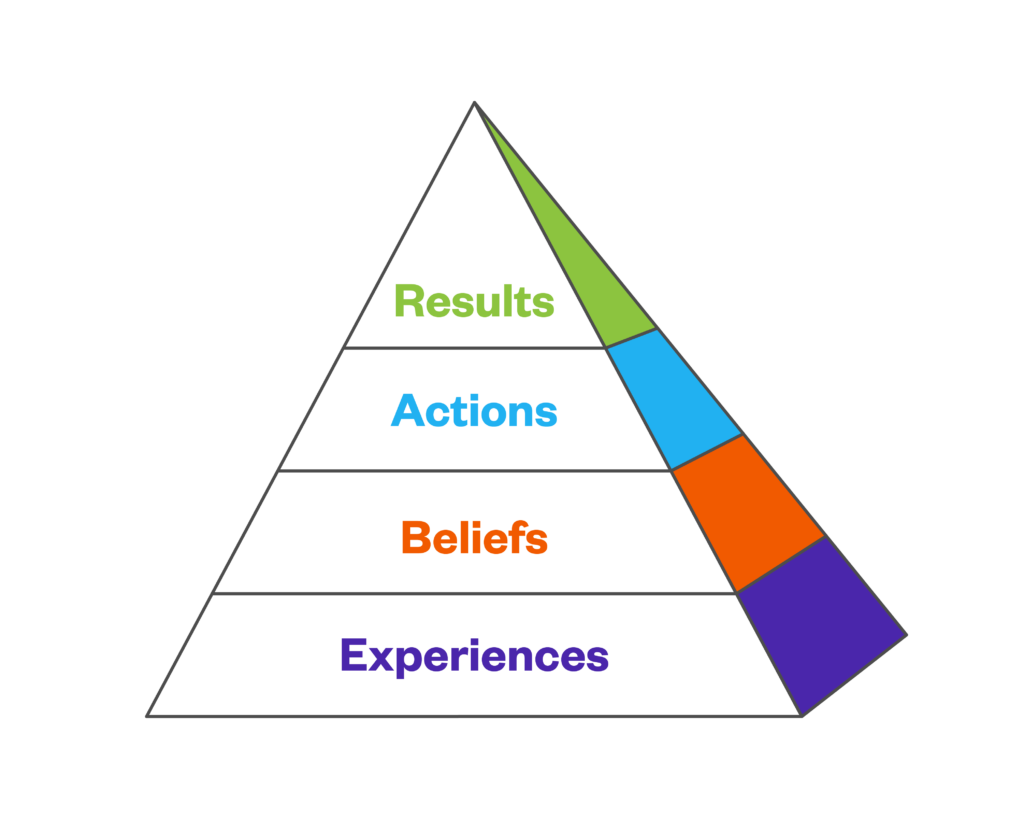As a leader, are you holding space for your employees to guide your organization on the path to achieving impactful outcomes? Some of the world’s best ideas have come from “lower-level” employees. For example, the famous Starbucks Frappucino wasn’t dreamed up by the company’s R&D team. No, the idea came from a group of frontline employees and their manager in Southern California over 25 years ago. Today, it’s a staple on the menu and contributes to the 74 percent of total cold beverage sales in U.S. Starbucks.
William Kahn, Professor of Organizational Behavior at Boston University, defines “psychological safety” as being able to show one’s true self without fear of negative consequences to self-image, status, or career. In the context of the workplace, we view psychological safety as the shared belief that everyone in the organization is allowed to voice differing opinions, pitch new ideas, raise important questions, and even make mistakes without fear of retribution.
Not many employees feel like there is an audience for their voices, though. Gallup research shows that only three in 10 U.S. workers strongly believe that their opinions matter at work. However, the same research shows that if six out of 10 people felt this way, it could lead to many benefits: 27 percent reduction in turnover, 12 percent increase in productivity, and 40 percent reduction in safety incidents. Other benefits:
- A Google internal study shows that teams with high rates of psychological safety were better at implementing diverse ideas and driving high performance.
- The same study also shows that teams that felt higher psychological safety were more likely to continue working at that company.
- Research from Amy Edmondson, Professor of Leadership and Management at Harvard Business School, shows that employees who feel psychologically safe are more engaged.
[newsletter_module]
The spectrum of psychological safety
Psychological safety in the workplace exists on a spectrum — and it doesn’t begin with “not safe” and end with “very safe.” Rather, it gauges how involved a team or an individual is allowed to be within any given project, initiative, or even just day-to-day operations. There are also two different dimensions through which the spectrum moves: respect and permission.
In his book, The 4 Stages of Psychological Safety, Timothy R. Clarke describes the various levels of psychological safety that teams or individuals can move through. In Clarke’s model, as your teams progress through the stages, they are both more respected and given more permission.
Let’s examine this through the lens of an important meeting happening in an organization.
At stage zero lies “exclusion.” Teams or individuals are not involved in at all, and therefore lie at the apex of the two dimensions. They are neither respected nor given permission. This may apply to newer or lower-level employees and disregards their humanity, the basis for belonging to any group. They are not invited to the meeting.
Stage one is inclusion. Individuals are informally accepted as part of the team, but not safe to authentically contribute to the conversation. In this stage, they are invited to the meeting, but only as observers.
Stage two is learner. During this stage, individuals or teams are allowed to ask questions in order to attain more information as-needed to carry out their duties. They may attend the meeting and ask clarifying questions only.
Stage three is contributor. Individuals feel comfortable bringing new ideas to the table. In the meeting, they may ask questions and suggest new processes or ideas for improvement.
Stage four is challenger. In this advanced stage, individuals are able to not only voice opinions, but also challenge the opinions and ideas of leaders. In the meeting, the challenger might disagree with a superior and feel free to say so.
As teams move through the spectrum, they are given more respect and more permission. Relative to your culture, the more psychologically safe your employees feel, the higher morale will be. Additionally, creating greater safety facilitates a stronger connection between your employees and your organization, fostering greater accountability and ownership, ultimately leading to better results.
How psychological safety relates to The Results Pyramid

The Results Pyramid® model shows that experiences, beliefs, and actions — critical components of culture — get you key results that’ll grow your business. Experiences foster beliefs, beliefs influence actions, and actions produce results.
One study of 5,000 employees across 51 teams in a manufacturing company proved the Results Pyramid to be true — employees who believed that their team was in a psychologically safe environment worked toward desirable outcomes. Here’s what happened:
Experiences: Leaders showed support and care for team members through coaching and providing adequate resources, training, and information so that employees could do their jobs.
Beliefs: Because of those experiences, team members adopted the belief that leadership didn’t expect them to know everything instantly, which led them to believe they were in a psychologically safe space to receive support.
Actions: The shared belief in psychological safety among these teams led to positive behaviors including:
- Seeking feedback
- Discussing errors
- Course-correcting when a strategy wasn’t working
- Obtaining or providing help or expertise from colleagues
- Seeking information from customers
- Experimenting
- Engaging in constructive conflict
Results: The study found that those behaviors all had a direct influence on business results and helped exceed customer expectations.
How to cultivate psychological safety
To cultivate psychological safety, experts suggest the following actionable insights:
Be humble.
Humility and lack of confidence are not the same thing. You can be a confident leader while still recognizing you don’t know everything. Leaders must be receptive to feedback – whether appreciative or constructive – and be willing to make changes. Research published in the Washington Post shows leaders who display humility have more influence over people.
Seek feedback
Speaking of feedback, it isn’t just for managers to give to their direct reports. Feedback should be solicited by and given to every person in your organization, including leaders. When leaders receive feedback about challenges their employees are facing, it’s an opportunity to create a better process, improve working conditions, or implement innovative solutions.
Focus on shared success rather than personal success.
Leaders who give their teams credit for innovative ideas or solutions, as well as achieving or surpassing organizational results, often see better performance. Results cannot be achieved without the help of everyone in the organization, so one person’s success is everyone’s success.
Take accountability for successes and challenges.
It’s natural for even the most competent leader to make missteps from time to time. When this happens, you should identify steps to ensure you don’t make the same ones again. At the end of the day, you are the one who must answer for the results the organization achieves — or doesn’t.
Promote a growth mindset through professional development.
Investing in training and development for your employees allows you to foster an environment of innovation, productivity, and upward mobility. It shows that leadership understands that people, including themselves, have their weaknesses and is creating the opportunities to help people overcome them.
Work to achieve, not to avoid failure.
Encourage your people to take measured and responsible risks. Preventing risk is important, but if you’re not allowing your people to take risks at all, your company will plateau due to lack of innovation.
Encourage meaningful work through purpose.
When your people have a sense of purpose at work, they’ll know which actions align to that purpose. That will motivate them to speak up when they see an action that doesn’t align to that purpose.
Psychological safety isn’t a new-age concept designed to coddle workers. It’s a necessary component of a healthy workplace that drives results. When you cultivate a culture that prioritizes psychological safety, you give your people the space to create, innovate, and positively impact your outcomes.




